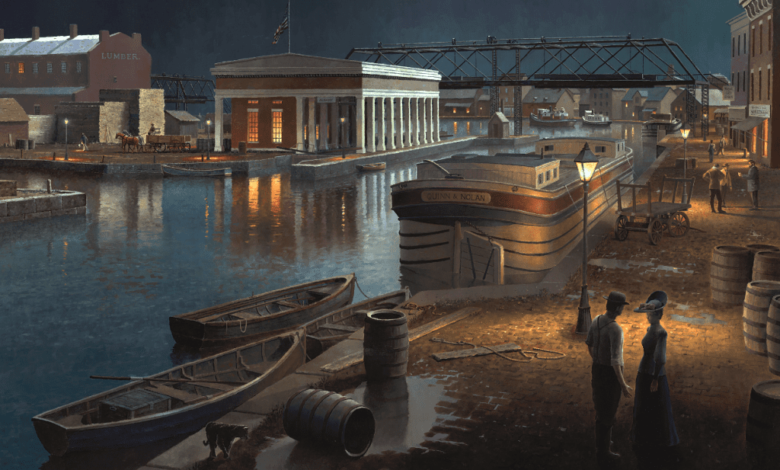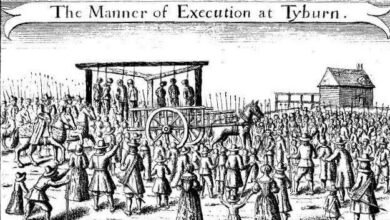The Erie Canal Weighlock at Albany, NY, 1880


 The Erie Canal was a great success. This becomes quite evident in the design and construction of its various service buildings. The weighlocks, were built to actually weigh freight boats to determine transit fees.
The Erie Canal was a great success. This becomes quite evident in the design and construction of its various service buildings. The weighlocks, were built to actually weigh freight boats to determine transit fees.
Their Greek Revival architecture wasn’t necessary for any utilitarian purpose, but was meant to express the stature of a powerful and successful organization.
Hundreds of thousands of tons of cargo and almost as many rugged individuals headed westward. When those mule drawn barges returned, they carried the resources that fed a burgeoning economy. In the years that followed competing forms of transit slowly emerged, gradually diminishing the dominance of the canal
By the 1880s tolls were no longer calculated as they had been. The weighlocks, however, went on serving in new roles as dry docks, administrative buildings, and other functions.
Several survive to this day, unfortunately Albany’s proud structure is not one of them, succumbing to the wrecking ball in the mid-1900s.
Read more about the Vicher’s Ferry.
A version of this essay by artist L.F. Tantillo was first published in the newsletter of the American Society of Marine Artists. It’s provided here in support of the Albany Waterway project, which hopes to reconnect Albany with the Erie Canal and Hudson River.
Illustration: Len F. Tantillo’s “The Weighlock, Albany, NY, 1880,” oil on canvas, 32 x 48 inches, 2024.
Source link




